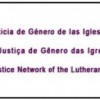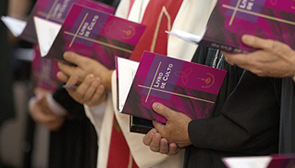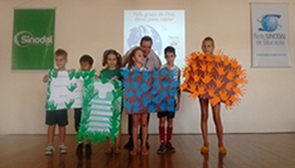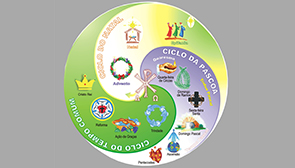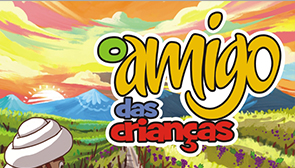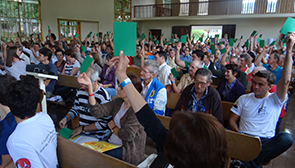Bible Study 7
Pastor Izani Bruch
Iglesia Evangélica Luterana en Chile
Traduction: Elisa Pérez Trejo.
Looking at the Gospel of Matthew 15:21-28 in search of inclusion in times of pandemic.
- I invite you to read the biblical story of an unnamed woman that we find in the Gospels of Matthew and Mark in this time of pandemic, where we see in Latin America, together with the health crisis, the increase in violence, racism, discrimination and hunger. .
1. Read Matthew 15: 21-28 and also the parallel in the Gospel of Mark 7: 24-30
- What differences can you observe between both stories?
- What problem appears in the texts?
- What feelings and images does the story of this woman produce in you at this time?
2. Looking at the text
- Our study text deals with a fundamental theme in the primitive community, the question of the place of the gentiles or pagan people in the ministry of Jesus and in the community.
- In verses 21-22, we observe a geographical change, Jesus goes with his disciples to the region of Tyre and Sidon, pagan region in the north and northwest borders of Palestine (Phoenicia).
- While Jesus was going to that region a woman who comes from this region, goes out, crosses the border and presents herself to Jesus crying out for help for her daughter. Matthew tells us of a Canaanite woman and Mark calls her Syrophoenician.
- Another difference that we can observe is that in Mateo the woman appears in a public space and in Mark in a house.
- In Matthew the Canaanite (non-Jewish) woman has a behavior that draws attention, she follows Jesus and the disciples with cries: Lord, have mercy on me. Then she expresses the reason for her cry: My daughter has a demon that torments her.
- In Matthew it seems the intervention of the disciples asking Jesus to silence the woman's cries for cry.
- Jesus at first does not answer, keep silent. Then he points out to his disciples that he was sent only to the lost sheep of Israel.
- The woman insists, and Jesus opens a dialogue with her, where “he establishes a sharp distinction between children and cubs (the Jews used to call the Gentiles dogs, for their idolatry and for the corruption of their customs)” (Biblical Commentary Latin American, p.351).
- Jesus' attitude towards this woman is opposite to that shown with the poor and afflicted. The woman responds with courage to the harsh words of Jesus, noting that even dogs are allowed to eat from the crumbs that fall from the children's table.
- The woman's response causes a change of attitude in Jesus. And our text ends with Jesus highlighting the faith of this woman, who achieves from him the miracle, the inclusion of her and her daughter in his mission, in his saving work.
3. Reflecting
The story of this Syrophoenician or Canaanite woman, who crosses borders to cry out for the life and liberation of her daughter is a story that is repeated in our countries. The health and social crisis of the COVID-19 pandemic highlights the border problems that we have not yet managed to cross: equality and inclusion that the gospel challenges us.
At this time the borders of our countries are closed. Thousands of foreigners claim to return to their country, because in our countries there no longer seem to be places for them and they, in fact, never were, they were always from outside. Huge rows in the different embassies show us the harsh reality of the immigrant population. The majority are women, women who today are the first to be fired from their informal and miserable jobs. At one point they dared to cross the borders and were willing to eat crumbs that fell from our tables to survive and be able to send resources for the bread of their sons and daughters in their countries. Today they must again cross the borders back to their countries due to hunger and exclusion. Our text shows the story of a woman who with faith, courage and boldness crosses borders and defies conventions that exclude and discriminate.
Jesus' attitude towards the crying, response and faith of the woman was transformed. Our attitudes towards “the outsiders” also need to be transformed, we also have to do with Jesus this process that allows the miracle of inclusion to take place so that there is no exclusion and discrimination between us and us.
4. To think and dialogue:
What borders do we need to cross as churches to live the inclusive proposal of the Kingdom of God revealed in Jesus?
How can we promote the values of equity, compassion and inclusion in this time of pandemic?
What actions of the Canaanite or Syrophoenician woman serve as an example to dare to cross borders that deny the dignity of all as daughters and sons of God?


